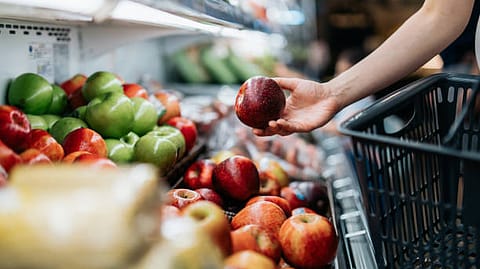Top 5% in rural areas spend 7.6 times more than bottom 5%: SBI
This disparity is even more pronounced in urban areas, where the top 5% earn 10.4 times more than the bottom 5%.

The average Monthly Per Capita Consumption Expenditure (MPCE) for the top 5% of the rural population is ₹10,501, about 7.6 times higher than the average MPCE of ₹1,373 for the bottom 5%, according to a State Bank of India (SBI) Research report. This disparity is even more pronounced in urban areas, where the top 5% earn 10.4 times more than the bottom 5%.
There has been an almost equal rise in Monthly Per Capita Consumption Expenditure (MPCE) across different income groups in both rural and urban areas over the past decade. Notably, the gap between the highest and lowest income groups in urban areas has significantly decreased. This analysis is based on the Survey on Household Consumption Expenditure: 2022-23 (HCES) by NSSO.
The SBI noted that an enhanced 'Ease of Living' for rural households is anticipated, facilitated by seamless connectivity and improved transportation infrastructure. This development is expected to significantly impact consumption patterns, altering buying and selling behaviours. The incremental construction of rural roads under the PMGSY (Pradhan Mantri Gram Sadak Yojana), in conjunction with National Highways, is enhancing connectivity loops, providing real-time two-way access for rural communities. Horizontal integration is becoming a key differentiator in this process.
The report highlights that rural households are experiencing improved living conditions, thanks to better connectivity and transportation infrastructure. The expansion of rural roads under the PMGSY program, in conjunction with National Highways, is enhancing real-time access and facilitating better integration of rural areas.
“Consequently, difference between rural and urban MPCE to rural MPCE is embracing deep decline, vouching for around 30% of rural MPCE now propelled by endogenous factors as government fortifies the ecosystem through transformative measures like DBT transfers, PM-KISAN, Ujjwala, MSP, eNAM, AIF all strengthening the rural infrastructure,” the report states.
The State Bank of India observed that, although there has been nationwide progress, regional disparities persist. The average MPCE in the Southern and Northern states remains nearly twice as high as that in the Eastern states. However, a positive development is that the Eastern states have shown slightly higher growth rates in rural areas from 2011-12 to 2022-23 compared to their more affluent counterparts, indicating their potential to narrow the gap despite larger populations. Interestingly, the North-East states have achieved the highest decadal growth rate, attributed to the 'Look North-East' policy implemented over the last decade, which has significantly improved the ease of business and living in these previously lagging regions.
Additionally, there has been a noticeable shift in food consumption patterns across the country. For instance, the North-East region has seen the largest decline in rice consumption in both rural and urban areas, wheat consumption has dropped by over 1 kg per person per month in both North and Central regions (rural and urban). Overall, cereal consumption has decreased in 2022-23, reflecting changing lifestyles.